Two-minute review
The Apple AirPods Pro deliver active noise cancellation and an improved design compared to the original AirPods – and that's why they're still the best Apple headphones you can buy today.
They're about to get even better too, thanks to a slew of upgrades due to come in with iOS 15 in September. These upgrades include Conversation Boost, which is designed to help you hear face-to-face conversations more clearly, the ability to announce notifications with Siri, and integration with Apple's Find My app.
However, at $249 / £249 / AU$399, they’re pretty pricey too, and as such, can’t be called the very best wireless headphones out there, even though they do come close. A rumored entry level version of these Apple earbuds – the so-called AirPods Pro 2 – could change this, however.
If you’re an iPhone user looking for some well-fitting wireless earbuds with strong sound quality, you could do a lot worse than the latest AirPods. The redesign means they’re far less likely to fall out than their predecessors, and the additional microphones provide strong noise cancellation (particularly when commuting), as well as a useful Transparency mode, which really does let the outside world in.
While the fit is better than the original AirPods, you will need to get used to controlling them with the capacitive, touch-sensitive ridge on each stem – this takes some getting used to, but it’s a neat way to activate noise cancellation and skip tracks.
There’s so much ‘Apple-ness’ that runs through the AirPods Pro – from the initial setup, where the true wireless earbuds scan your ears to check they’re the right fit, through to the fact there’s a small air vent to make putting them in or removing them a more comfortable experience. In short, fans of the Apple ethos will be overjoyed with their purchase here.

The sound quality of the AirPods Pro has certainly improved since the previous iteration – there’s a notable emphasis on vocals and bass, meaning these earbuds are better for pop fans than those that enjoy a more natural presentation that lends itself to classical music or more orchestral sounds.
The battery life is strong (for Apple earbuds – not compared to the eight-to-nine hours other true wireless earbuds offer), and we found that the advertised four-to-five hours from a single charge was accurate, although we recommend charging the case regularly (a wireless charging pad is a convenient and cool way to do this) as you can get caught out when the case has suddenly run out of juice.
Now, it's rumored that the Apple AirPods Pro 2 will launch in 2022 (or perhaps even this year) to usurp the AirPods Pro. However, details are very thin on the ground, and there's no confirmation that the rumored earbuds even exist. In any case, you can expect to find some great AirPods deals over Black Friday 2021, so the AirPods Pro are still worth picking up, even if they are a few years old now.
If you want some of the best headphones Apple has made, the AirPods Pro are the culmination of many years’ work into a strong audio product. There are better true wireless earbuds out there, but for Apple fans and iPhone users (with the means to afford them) they’re a great choice.
- We've been busy comparing the AirPods Pro with other popular models on the market – check out our AirPods Pro vs AirPods, AirPods Pro vs Sony WF-1000XM3 and AirPods Pro vs Beats Powerbeats Pro articles to find out how they stack up
AirPods Pro release date and price
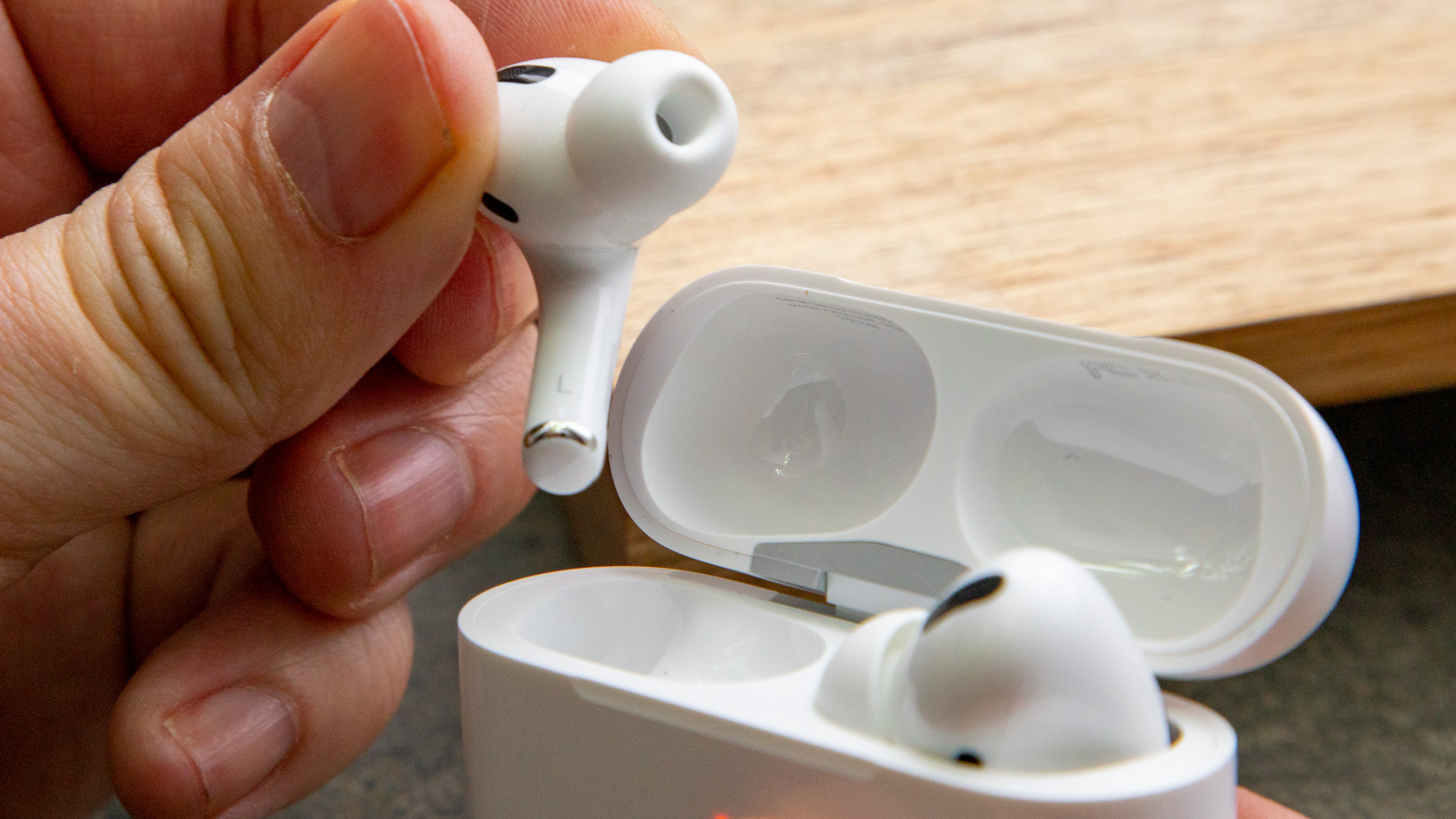
The AirPods Pro release date was 30 October 2019 worldwide, and you can pick them up from Apple and a number of other retailers.
The important thing to note here is that they are not a replacement for the 2019 AirPods model... and that’s reflected in the AirPods Pro price point.
You can buy the AirPods Pro for $249 / £249 / AU$399 – which is a considerable hike over the 2019 AirPods' $159 / £159 / AU$249 (with the standard charging case), and even the $199 / £199 / AU$319 with the AirPods' Wireless Charging Case bundled in. AirPods Pro deals are often available, but don't expect any huge price cuts.
Still too pricey? It's rumored that a cheaper AirPods Pro model is on the cards; the AirPods Pro Lite could be an entry-level version of the noise-cancelling earbuds, though a release date still eludes us.
AirPods Pro setup
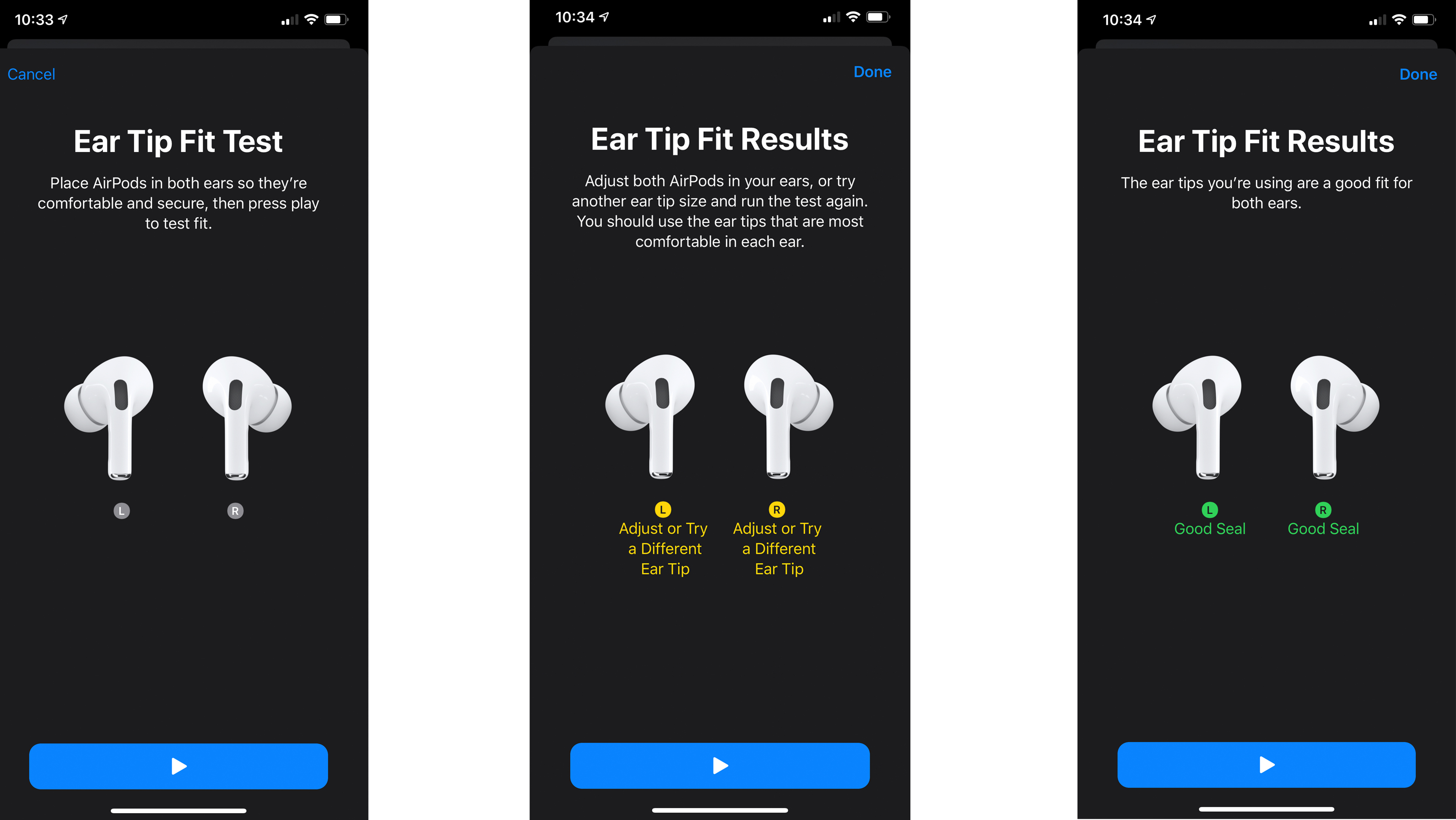
Like so many other Apple devices, the AirPods Pro instantly connect to your iPhone or iPad – you simply need to open the case to get going.
Well, we say ‘simply’ – you'll need to make sure that iOS 13.2 or above is downloaded to your device so you can get, in Apple’s words, “all the advanced features” on offer – we believe these are the new icons for the AirPods Pro as well as the ability to control the Transparency and noise cancellation directly from the Control Center.
Once activated, the AirPods Pro will be automatically paired with your phone and all Apple devices linked to your iCloud account (including Apple Watch, iPad and Macs), so you won't need to keep connecting your new buds to your other Apple devices.
Once you're in, heading into the Bluetooth settings will assess your fit, checking whether the earbud tips you've chosen (whether that's small, medium or large – medium is the default) are creating the right seal.
Achieving a tight seal against your ear canal is an important aspect of the overall sound quality of the earbuds, and helps to create physical sound isolation and passive noise reduction; in a perfect world, no sound gets in, and no sound leaks out.
This is achieved by the playing of a short piece of music, with the AirPods Pro microphones internally assessing whether this sounds as it should – if you're like most people and get a good fit, you're given the green light (or green lettering, to be more precise).
This writer's ears are just terrible when it comes to having most kinds of earbuds fall out, and we achieved a good fit straight away, with the AirPods Pro feeling like they were in no danger of detaching from the ol' head holes easily; in the headphones-reviewing world, we call that a plus.
Playing around with the fit and letting them dangle loosely out showed that the AirPods Pro are able to tell when there’s sound leakage – another pal of ours who used the new AirPods for the first time found that Apple suggested a larger bud, and then the seal was fine.
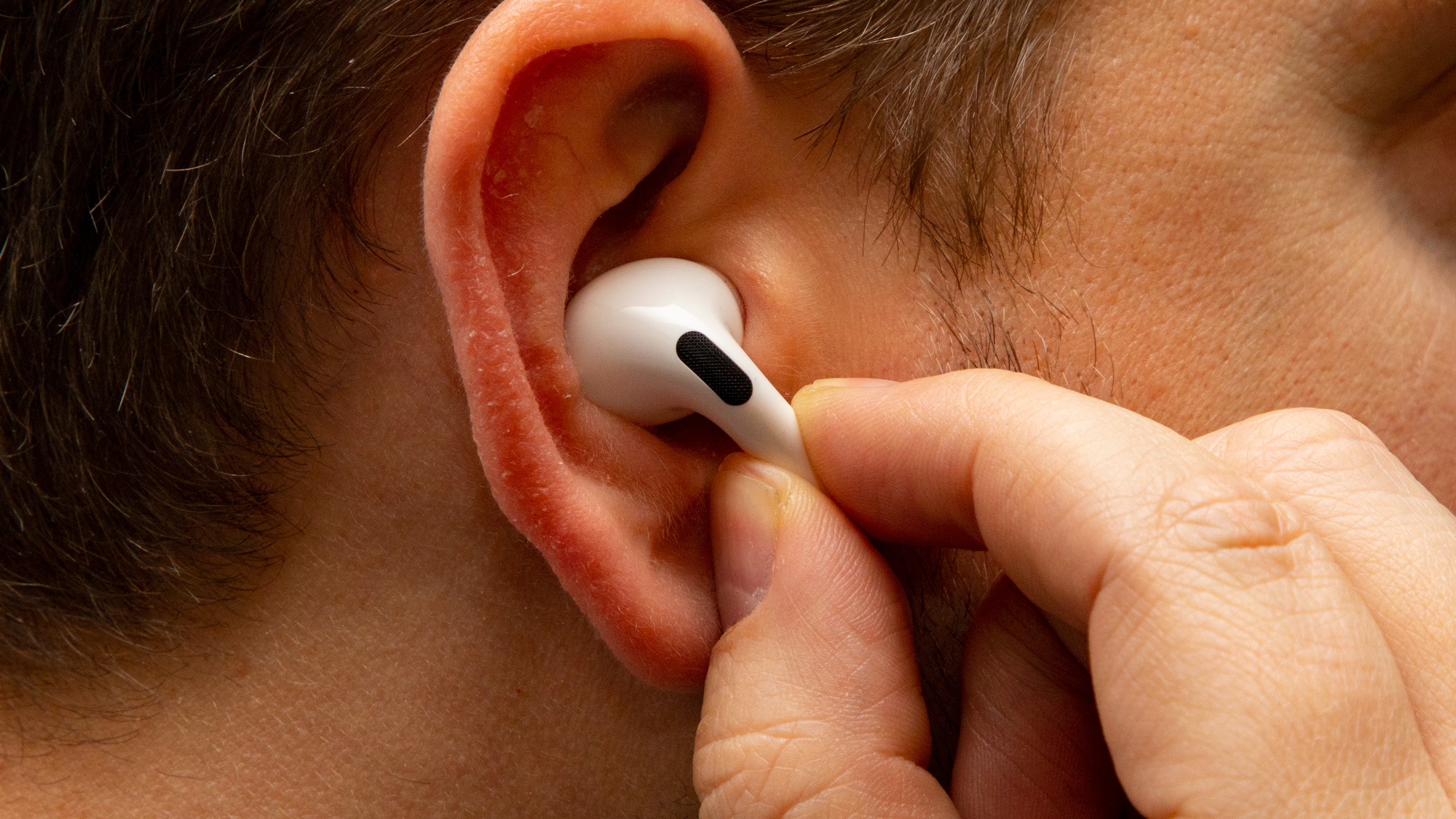
Switching between the tips in the box is, once again, very Apple – whether that’s a positive or negative thing depends on how you feel about the company. Rather than a silicon bud that you have to wiggle onto or off a small stem, these just click into place.
This allows the AirPods Pro to have a more compact design, and makes setting them up feel more premium… but at $4 apiece, they're not exactly cheap to replace. And while you can pick up new silicon tips for standard earbuds easily, fitting them to the new AirPods isn't as easy thanks to the little clips, rather than simply wiggling silicon onto a stem.
Getting the eartips on and off is really fiddly though – they don’t snap off instantly, and require a little bit of force to remove. However, the system seems robust and once you gain the confidence to do so, it’s fairly easy – and it’s not like you’ll have to do it that often.
You might want to remove them once in a while for cleaning purposes though, and we’re still not confident taking the bud off and on the stem without worrying a little that we’re going to break something.
AirPods Pro design and use
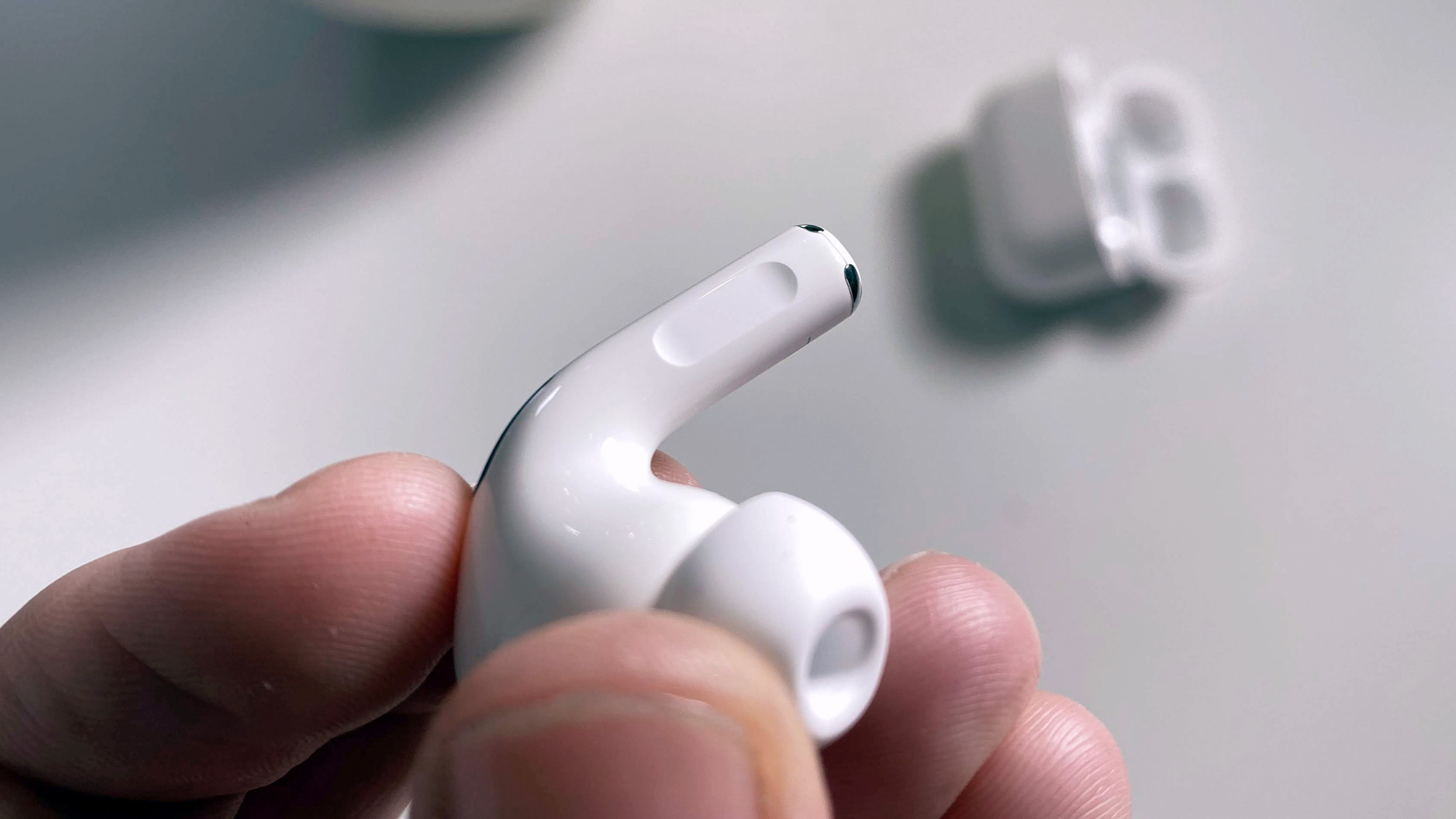
The first thing we noticed in our early test is that the AirPods Pro are light – they’re so light that, once plopped into the ears, it’s hard to tell that they're actually there. While this lightness is a plus in terms of comfort, it could be a minus in other ways – we could easily imagine a situation where you lose one, and don't actually realize for a while that they're not there (except that your music would have stopped playing).
The stems are much shorter than on the regular AirPods, and where you were able to tap the body of the older AirPods in order to skip tracks or activate Siri, the fit of the AirPods Pro means that would be a less comfortable experience here.
Instead, there’s a ‘capacitive force sensor’ in the stem, a small ridge on each of the AirPods Pro, where squeezing said area will activate noise-cancelling / Transparency mode, or skip and pause tracks.
Initially this was a little tricky to get used to, as the shorter stems made it hard to find the ridge, but after a few minutes it became second nature – although as the buds are quite compact, it does feel a little like you’re pulling them out your ear every time you activate it.
After a week’s use, we found that it was thoroughly second nature, and there was an instant instinct to play, pause and skip tracks using this method.
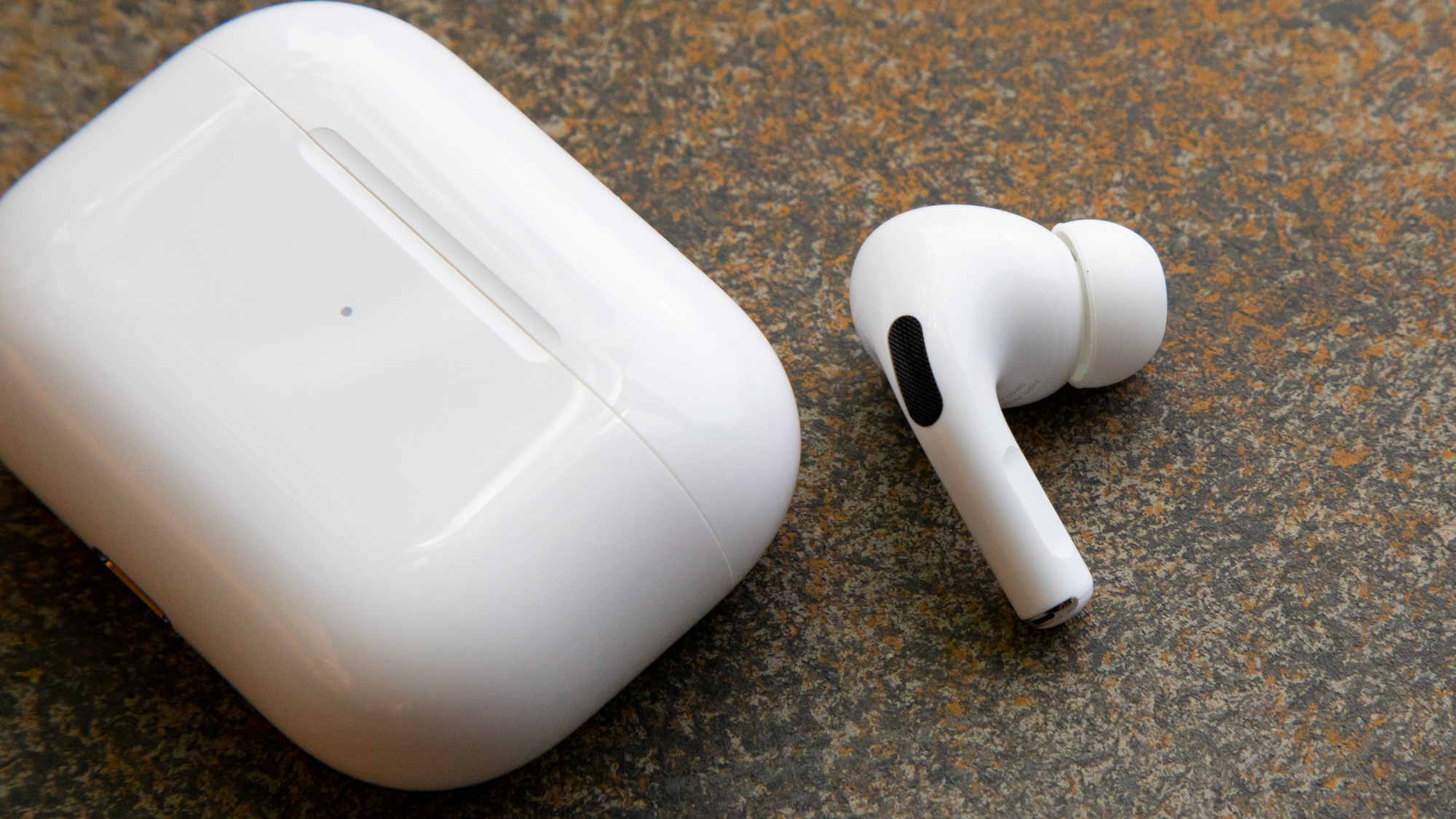
It’s a shame there’s not a haptic click on the bud itself to confirm the touch, as that would have made the new AirPods Pro feel so much more tactile.
You can change what squeezing the ridge does, setting it to control Siri if you’d prefer, and you can assign a different function (noise cancelling on one, Siri on the other) to each earbud as well.
We’ll tell you one thing that would have been awesome – touch-sensitive volume control on the stems. Straight away we were irritated by having to reach for our phone to do that – the Powerbeats Pro, for instance, have a clickable button to change the sound level and it’s really useful.
A reader got in contact and suggested that we use the ‘Hey Siri!’ command to change the volume. Reasons we don’t want to do this:
- It doesn’t always work
- It takes about four seconds to speak, confirm and activate
- The sound goes really loud or quiet
- You look like an absolute fool or worse, you’re heard whispering quietly to Siri so nobody hears you
In short, Apple should have made the outside of the AirPods Pro touch sensitive for volume control.
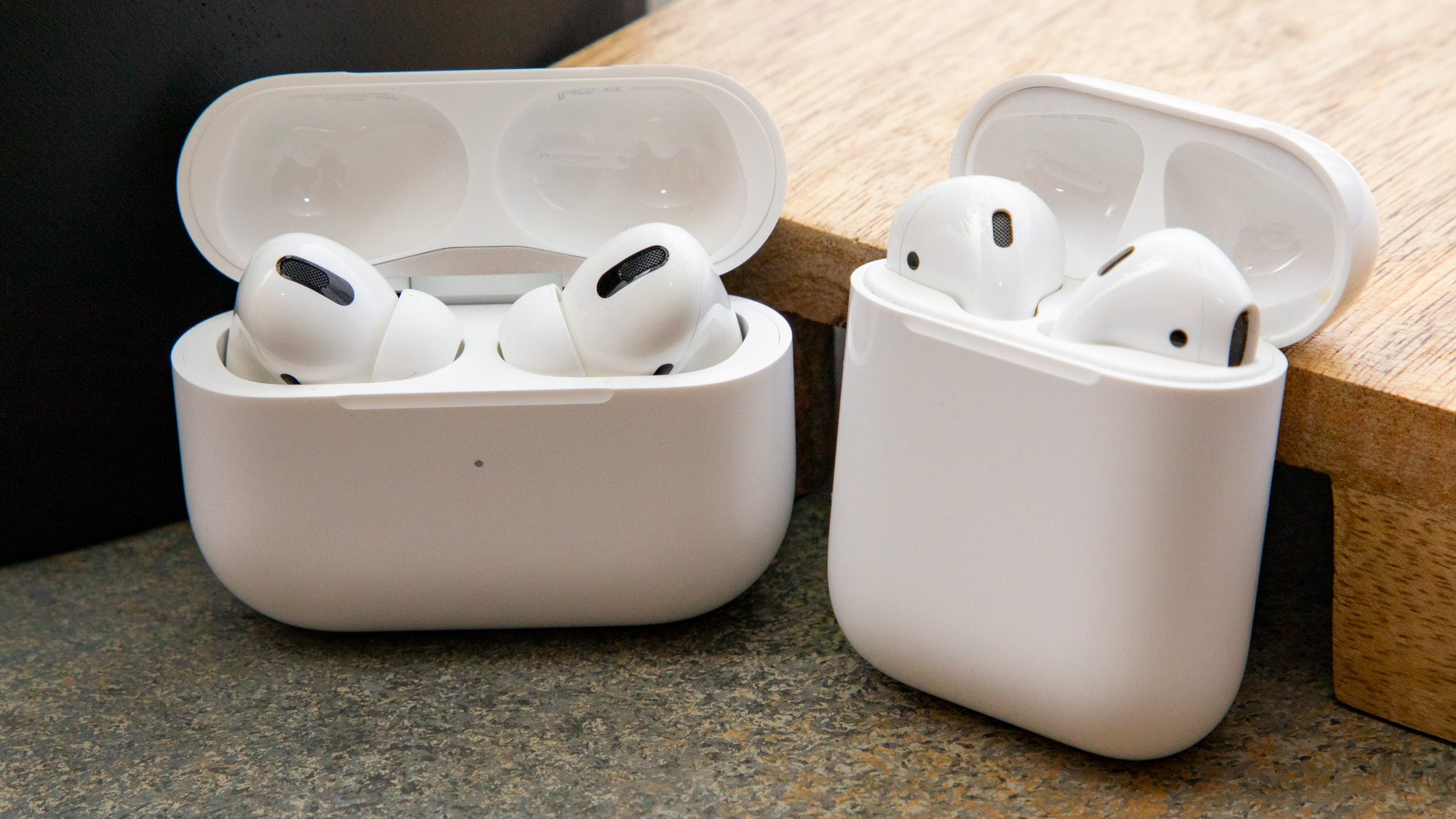
Inside the AirPods Pro is an accelerometer, and on the bud itself an optical sensor - combined, they allow the buds to stop and start the music accordingly when your AirPods are removed.
Speaking of which… the improvement in the fit of the AirPods Pro over the original AirPods is huge. The silicon buds lock them in place snugly, and the earbuds are so light that they don’t bounce around, even if you’re jogging down the road or charging up a flight of stairs at the train station.
We wouldn’t go as far as saying they’re the most securely-fitting earbuds on the market, however. When running and sweat comes into the mix, the silicon tips can start to slide around a little.
Here’s a scientific test: we found that it took four far-too-vigorous-hurt-your-brain shakes of the head to get the AirPod Pro to fall out in the dry, but when they were coated with sweat it was just one violent skull-pivot.
We want to stress they never fell out, but the fit was far looser. If you’re someone who struggled with the fit of the original AirPods when running, these are a huge step forward and fit far more comfortably.
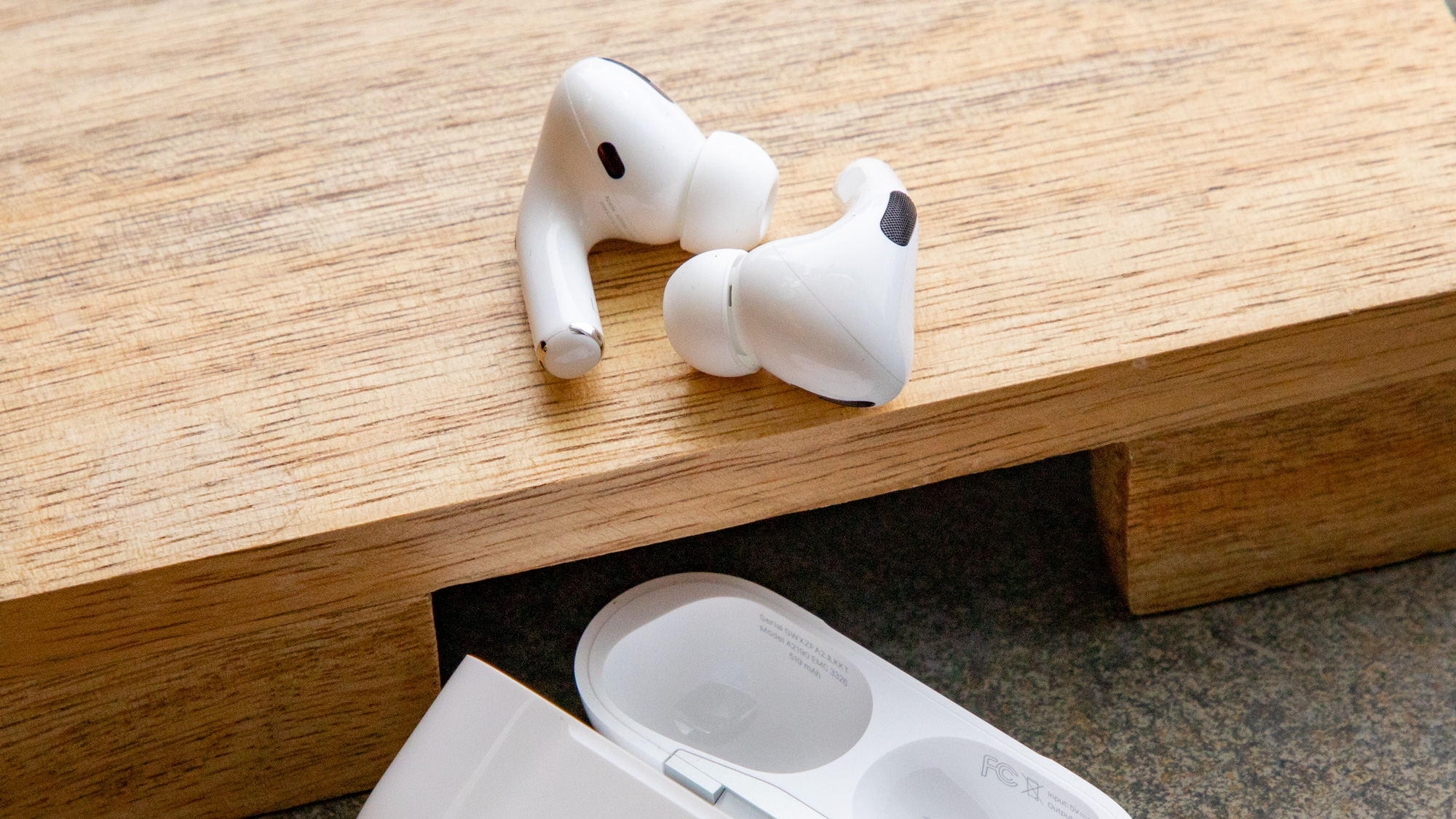
They’re also IPX4 water resistant – which essentially means you can use them in the rain and buckets of sweat won’t affect their performance. Big tick there from us.
The ‘Pods were also knocked them out a little too easily when removing a coat or accidentally brushing them (removing a backpack saw one fly out with minimal contact). But compared to the fit of the original AirPods, the Pro models are light years ahead.
One thing that could explain that slight lack of in-ear grip is the air vent Apple has designed in, so the seal is strong but there’s not a strange ‘sucking’ sensation when removing the buds.
Honestly, we never really felt this was an issue with other true wireless earbuds, so we can’t comment on whether it’s made a huge difference – but putting the AirPods Pro in our ears was always a comfortable experience.
Ultimately, the AirPods Pro are pricey, but they’re well engineered throughout, with little design tweaks and flourishes that really add to the overall experience.
Sound quality, noise cancellation and Transparency
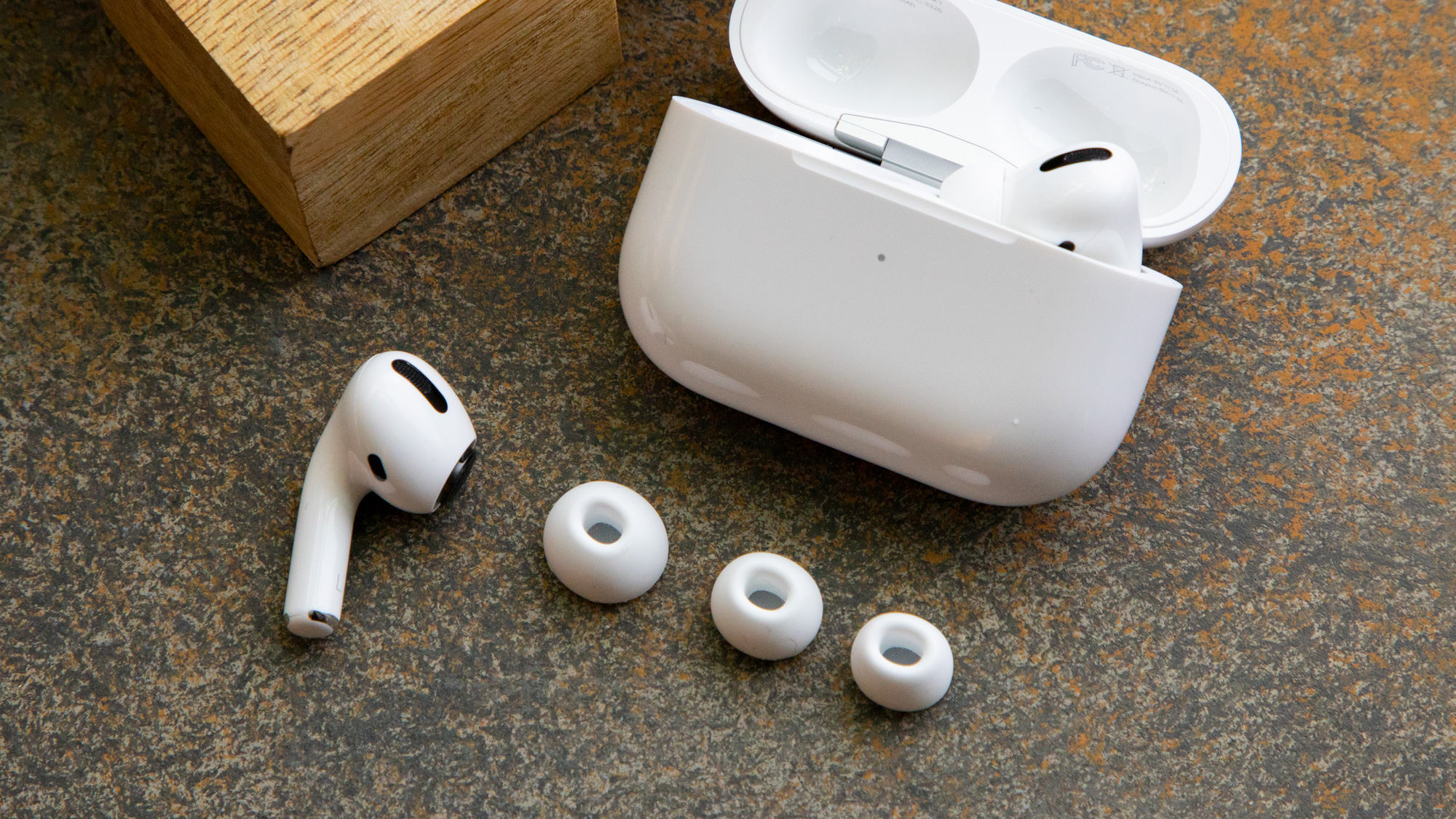
It’s one thing to fit well, but how do the new AirPods Pro sound? Well, Apple is touting custom drivers, improved bass, “clear and detailed mid and high frequencies” and an adaptive equalizer.
We tested the Apple AirPods over a variety of tracks, and found a number of similarities across the genres. We noted that vocals often sounded really rich and the bass, in particular, was more powerful than the AirPods 2.
This was present across acoustic / indie rock, electro, pop, and hip-hop - but equally across these genres, separation between high mid and low was only okay. There is a still a 'closed off' feeling (as in, it sounds as though the music is coming from inside your head, which isn't natural – really good headphones make it sound as if the sound is coming at you from all angles).
Compared to a high-end pair of on-ear headphones (or even some other top true wireless earbuds, like the Cambridge Audio Melomania 1), it was harder to hear all the details in the music in the AirPods Pro.
When listening to electro / pop tune Fortune by Little Dragon, the vocals come through clearly – this shows that mid-frequencies are well balanced and rich. Bass sounds really warm, too, though audiophiles might not like this as it isn't strictly 'natural', but it makes for an enjoyable listen.
Compare that to the performance when listening to classical music, like Mozart’s ‘Jupiter’ Symphony No. 41 in C Major, sounds a little duller. You can pick out the different harmonies of the strings well enough but the flute is lacking the sparkle that should make it soar above the mix.
Essentially, it feels like Apple is going for a stronger performance when it comes to the vocal or bass elements, which would make sense if it’s aiming to please those that like pop music.
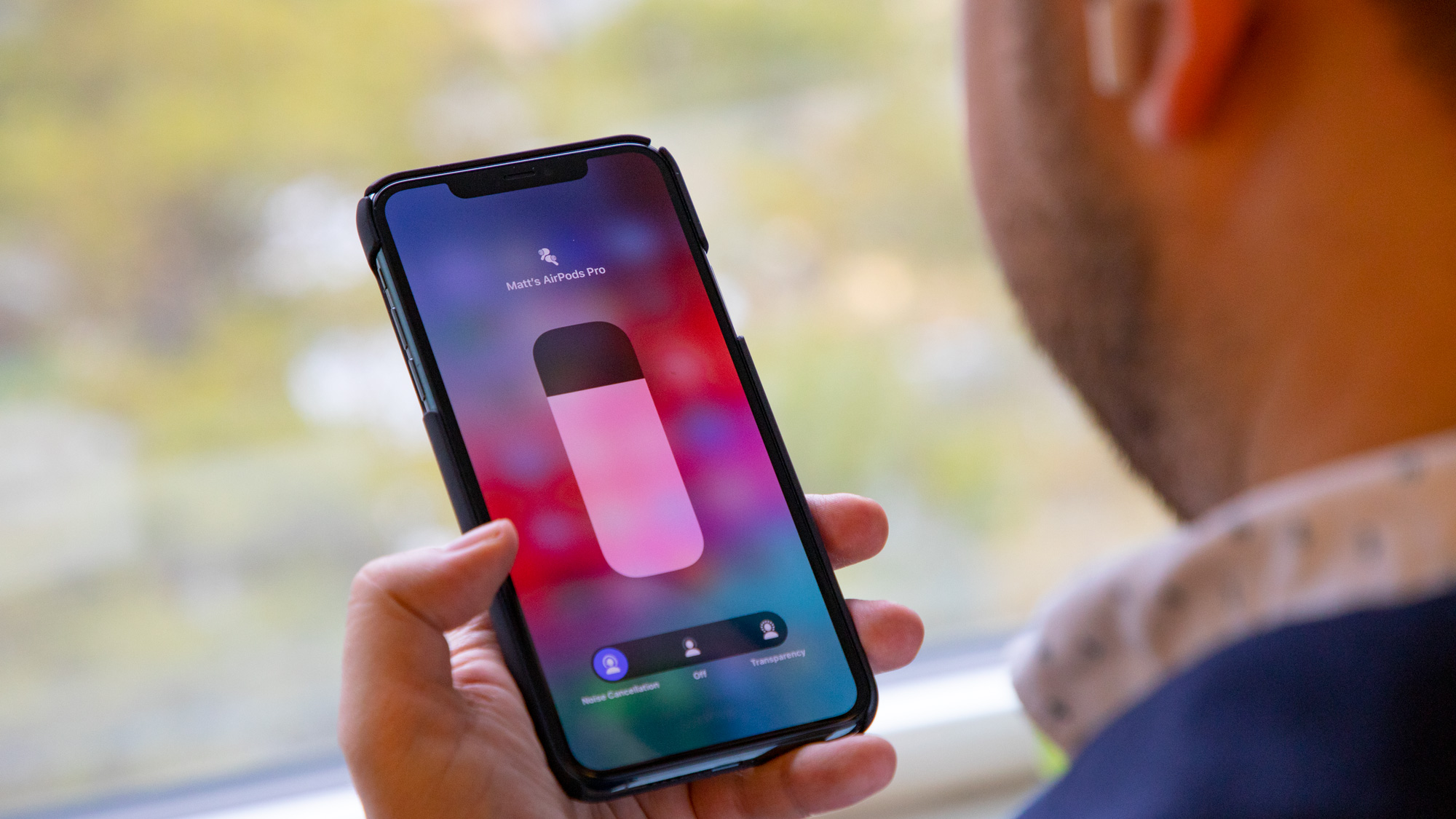
Part of that sound quality is down to the noise cancellation, which is noticeable and strong when turned on – you turn it on by squeezing the capacitive stem of the AirPods Pro, or by heading into the volume section of your iPhone and swiping to the left-hand icon (you can even toggle it on the Apple Watch, with a menu enabling you to turn the feature on and off).
Apple has placed two microphones in the AirPods Pro, allowing for both internal and external sound analysis.
The former will monitor the audio quality in the ear to see if the music that you’re playing sounds as it should, and alter it accordingly using an algorithm. The latter cancels out background sound, and creates a far more serene listening environment.
While we can’t test how well this algorithm that monitors sound inside your ear actually works, as there’s no way to turn it on and off – but the active noise cancellation has a strong and noticeable effect.
It won’t shut out all other sound around you – if you’re in an office and there’s music playing, a small amount might still bleed through – but, when walking down the street, the AirPod Pros practically shut off all the noise of a motor bike, and any constant noise (like a fan or constant wind) is shut out very well.
The AirPods Pro noise cancellation worked particularly well on a train, with the difference when the mode turned on and off being particularly stark.
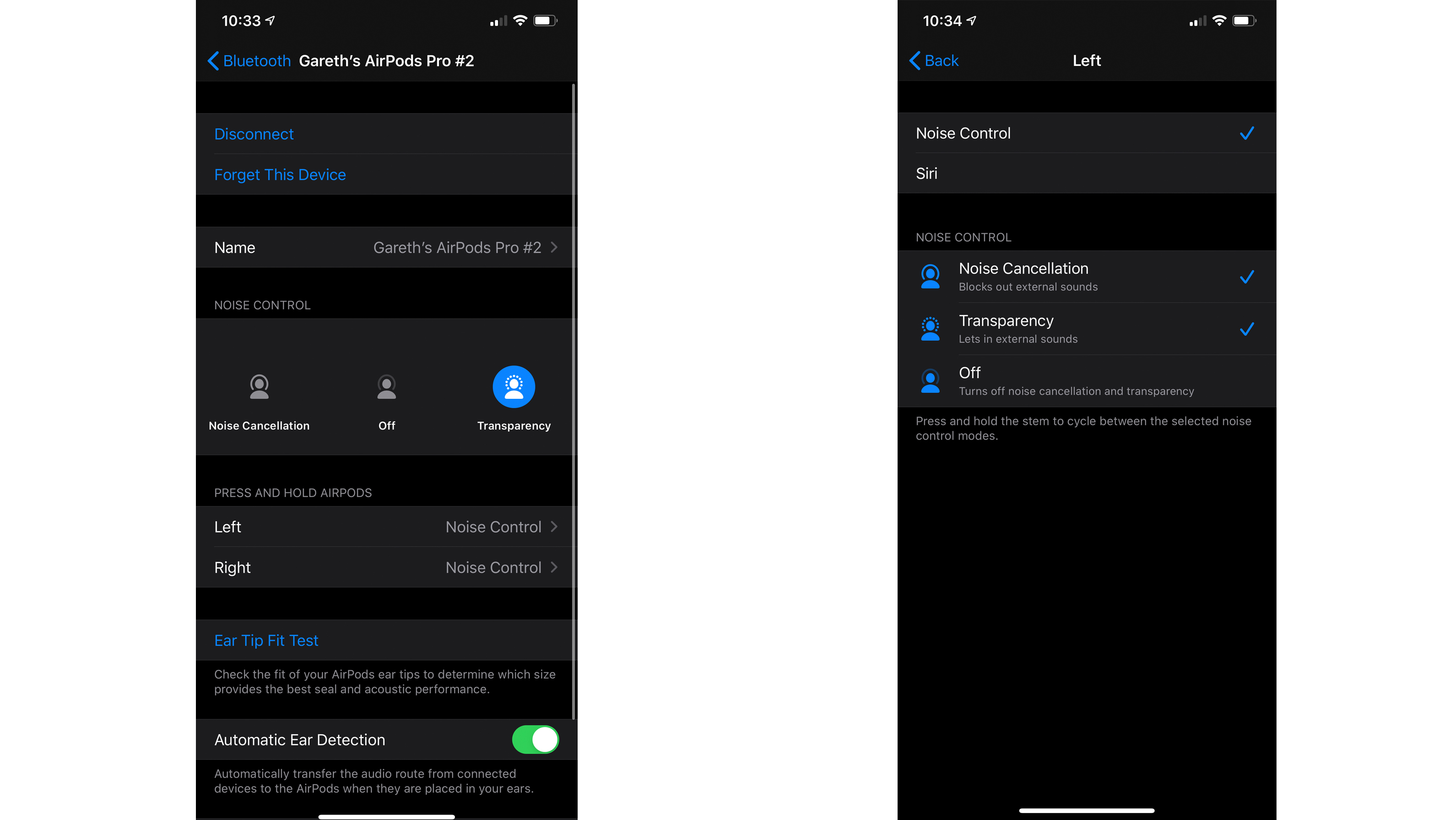
One odd thing we did note: if you just have the AirPods Pro switched on, but with no music playing, a strange, hushed ‘wub wub’ sound can sometimes be emitted as the noise-cancelling tech tries to deal with no sound going into the ear. It’s pretty infrequent but still feels strange when it happens.
Transparency is the other end of the noise-canceling scale from Apple, with the microphones inside the AirPods Pro able to pass external sound through ably.
It’s well-implemented feature, with the world fading slowly in and out when Transparency is turned on, rather than a sudden dump of sound landing in your cranium. You can have a conversation with someone even with your music playing (although if you’re over half-volume it’s a little tricky), and when there’s no music playing you’re barely aware you’ve got headphones in at all.
One thing that irks: the videos advertising the AirPods Pro make it seem like a simple brush of the capacitive stems on the earbuds is all that’s required to turn on Transparency, where in actual fact it takes quite a forceful and prolonged touch.
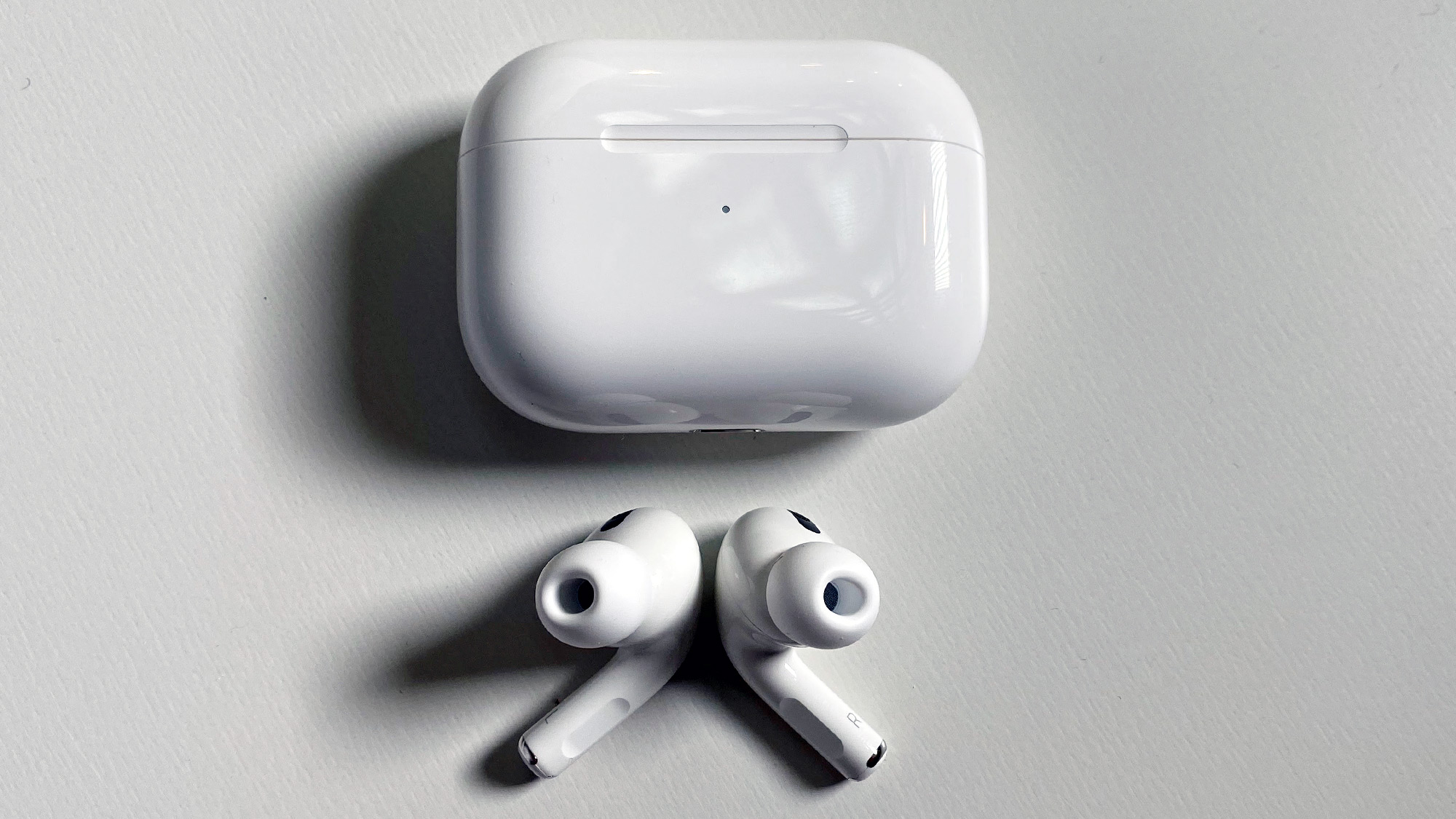
As with adjusting other settings, it’s something you get used to quickly, but it’s different from what we expected based on the videos.
One thing we did find interesting: if you’re planning on using the AirPods Pro to take calls when you’re out and about, you may find that you struggle when noise cancellation is turned on.
This seems to be because one naturally lowers their voice when the sound is more encompassing, and this stops the microphones picking up your voice as clearly as they might.
Turn on Transparency and the world comes back to life, sonically, and you’ll find that you automatically speak louder. You can have a decent conversation using the new AirPods, but it’s still not as good as just holding your phone to your ear.
One extra feature that we’re pretty into: hearing health. If you use the AirPods, Powerbeats Pro or the AirPods Pro, they send exact volume levels to your iPhone and you can see if you’re listening to things too loudly.
We noticed a marked improvement in the volume being pumped into our ears when switching from the AirPods Pro from the Powerbeats Pro - showing that the noise cancellation allowed us to drop the sound levels a little and still enjoy the same quality of audio.
So if you’re into saving your hearing health, the AirPods Pro offer an improvement over the original AirPods or even the Powerbeats Pro.
Spatial Audio
The AirPods Pro now come with a Spatial Audio feature thanks to a firmware update, bringing Dolby Atmos immersive audio to the true wireless earbuds.
First announced at the company's WWDC 2020 keynote in June, the Spatial Audio feature works in 5.1, 7.1, and Dolby Atmos, which positions sound all around you within a virtual sphere – that means that if you're watching a Dolby Atmos film that shows a plane flying overheard, it will sound as though the plane is really passing above you.
What’s unique to Spatial Audio though, is that it uses the built-in accelerometers and gyroscopes inside Apple’s earbuds and headphones to track the position of your head, as well as the position of your iPhone or iPad.
You’ll need an Apple device with iOS 14 or iPadOS 14, as well a streaming service that supports 5.1, 7.1, or Atmos. Stereo content can also be converted to Spatial Audio as long as the streaming service has enabled a special plugin for stereo spatialization.
Battery
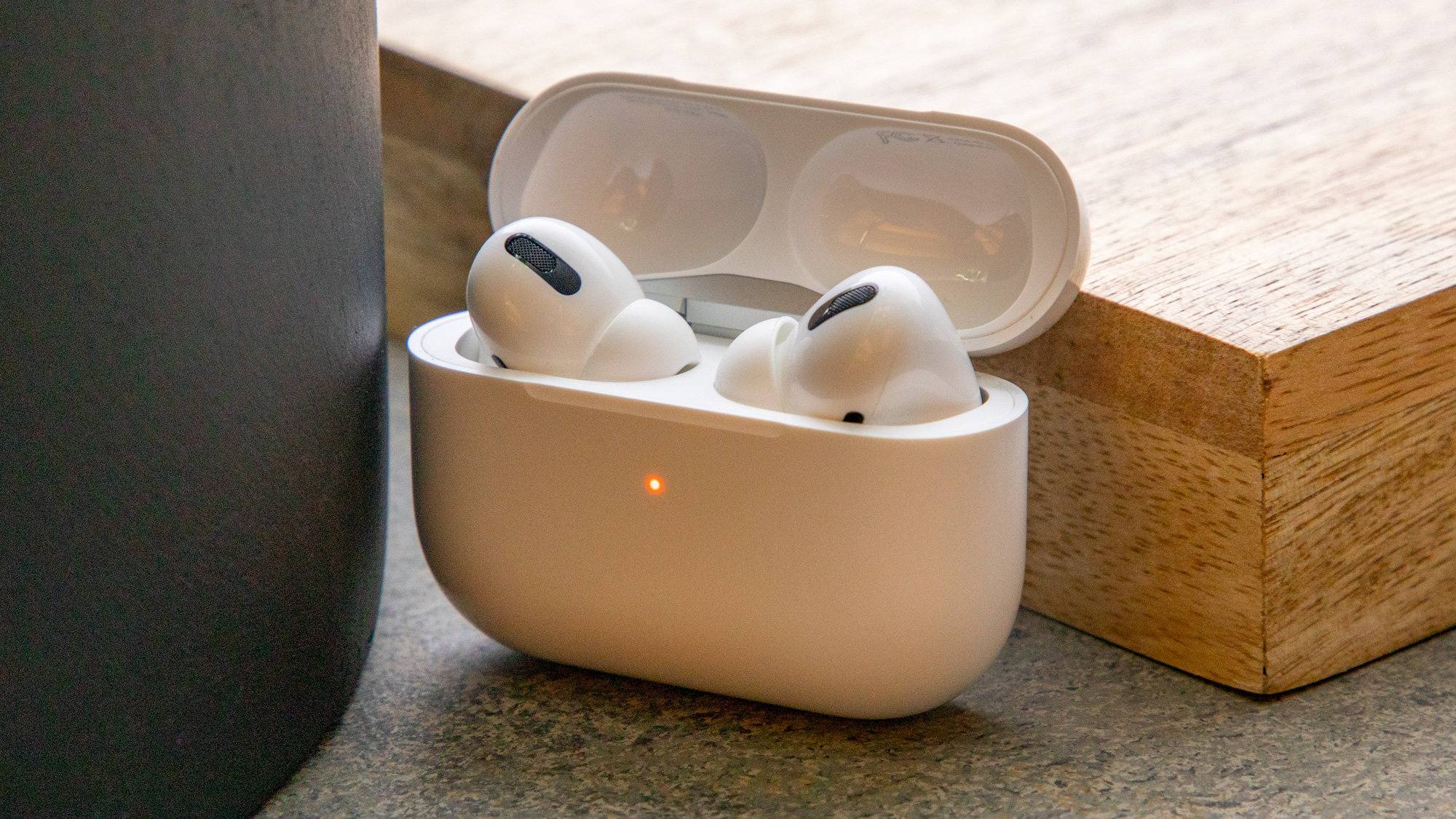
Right, let’s talk battery life: the AirPods Pro’s charging case will give you over 24 hours of listening time when fully charged, with each full charge of the AirPods Pro getting you five hours of listening (that’s with noise cancelling or Transparency off – you’ll get four and a half hours with it on), or three and a half hours of use if you use the AirPods Pro as a hands-free mic for calling.
These numbers are pretty accurate in real-world use – you’ll never really use the AirPods without either noise cancellation or Transparency on, but when flipping them in and out of the case you’ll rarely hit a dead battery.
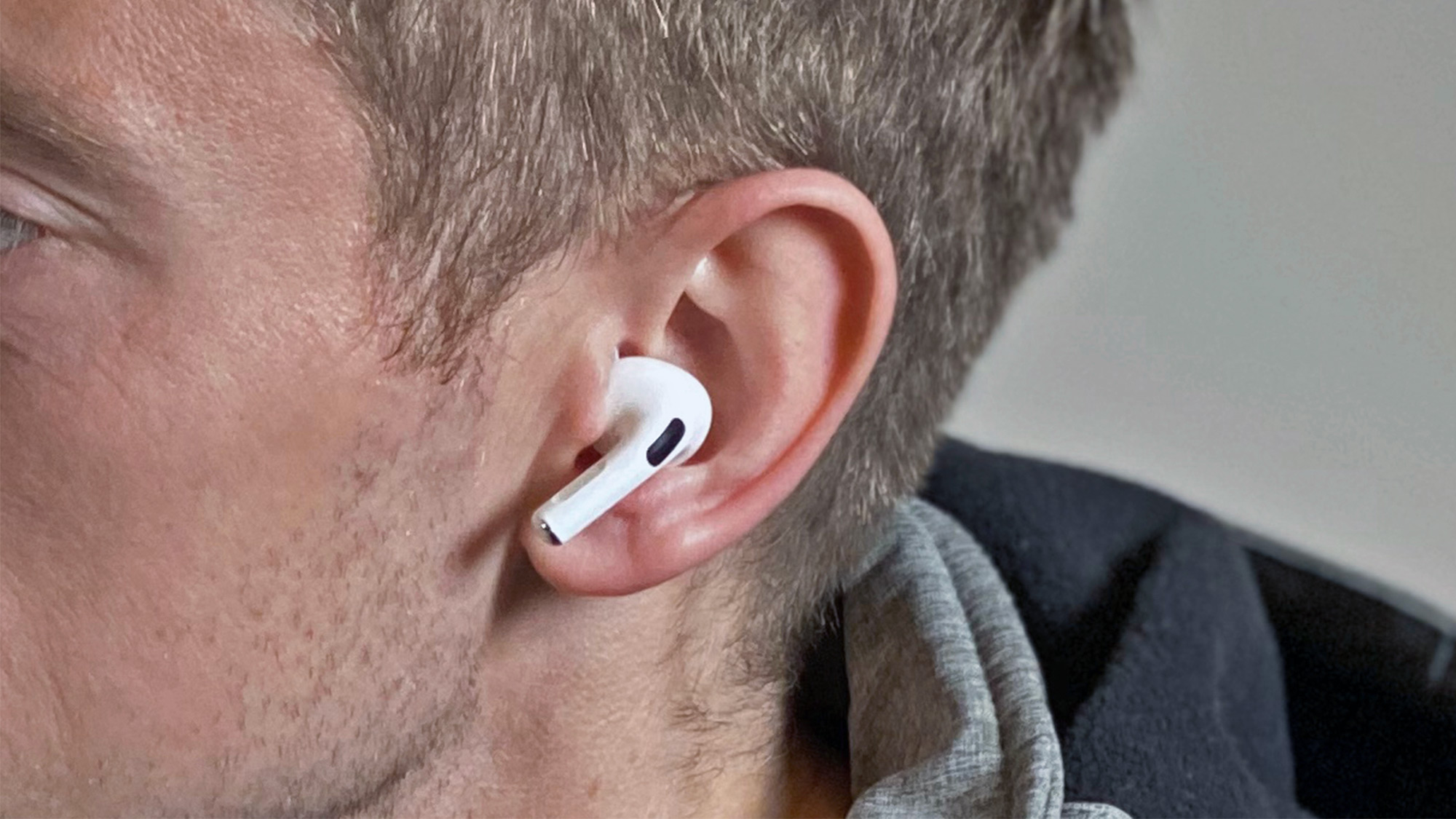
Should your new AirPods Pro die on you, Apple claims you’ll get one hour of listening time from just five minutes of charging, and we found that to be a little stingy - chucking them in the charging case from dead yielded 35% battery life, which was a little over an hour’s use.
That charging case is slightly annoying in that it’s hard to know how much juice is left in it. When you take the AirPods out you can head to your iPhone’s battery widget to check out how much power is left, but otherwise you’re left looking at the small LED on the front, which is only ever green or amber.
While we only needed to charge the case twice over a week’s hard use, we did hit a situation where it was completely dead - it would be nice if there was an early warning somehow.
In terms of charging the case, Apple has unhelpfully put a USB-C-to-Lightning cable in there. Unless you’ve got a new iPhone 11 Pro, or new MacBook, you won’t have the necessary charging block (as there isn’t one in the box either).
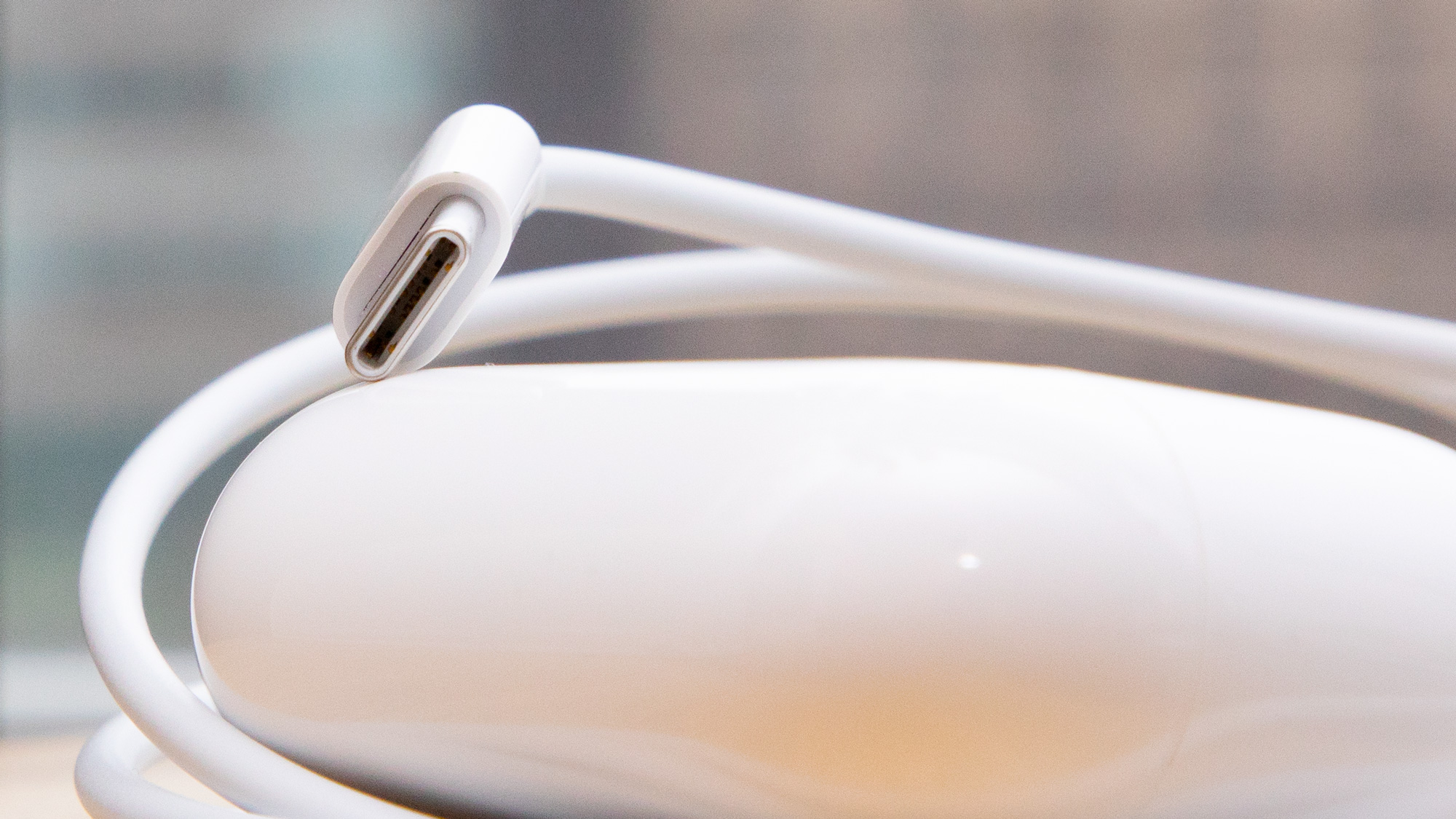
However, the good news is that nearly every person that buys the new AirPods will have a standard Lightning cable or two kicking around, so you’ll be able to charge them that way.
Don’t forget that this is a wireless charging case, so you can plop it down on a charging pad and get juicing. You might think this is something of a ‘nothing’ feature that you don’t want to pay for, but trust us, invest in the ecosystem.
There’s something really awesome about being able to just put down a phone or set of AirPods and have them charge up over the day - get one of our best wireless chargers and you’ll rarely run out of power again.
Should I buy the Apple AirPods Pro?

Buy them if..
You’re fed up with the fit of the original AirPods
We loved the This is the main reason to pick up the new AirPods – they’re so much more snug and premium-feeling than the original versions, and they’re far more capable of staying put.
You’re an iPhone user who wants sound quality mixed with convenience
While the AirPods Pro aren’t the best-sounding on the market, they are pretty good, and work so efficiently with an iPhone that you’re getting a great fusion here.
You want to look after your ears
It’s a much-overlooked feature, but being able to record the level of decibels being thrust into your skull is a massively powerful tool in helping you understand how much damage you’re doing to your long-term hearing. It's only one tool in a much-larger war to prevent hearing damage, but having Apple headphones gives you far more data on this.
Don't buy them if...
You’re cost-sensitive
The AirPods Pro are not cheap – so if you’re not bothered about having the best earbuds Apple has to offer, check out our other true wireless earbuds for what could be more applicable to your needs, or try the older AirPods – they’re still a decent choice.
You’re a fitness freak
There are many other true wireless earbuds that we’d recommend specifically for working out – the Powerbeats Pro are a strong choice, or the better-fitting Jabra Elite Sports, for instance. Be sure to check out the best running headphones for more.
You’re not a fan of true wireless headphones
There’s the other point to talk about here: true wireless might not be for you. There is always that background worry they might fall out, and they certainly don’t keep your ears warm - check out our other wireless headphones if you want to get a feel for what could be a better fit for you.
Olivia Tambini contributed to this review.
- An earlier version of this review was posted with an incorrect star rating. This has now been rectified.
from TechRadar - All the latest technology news https://ift.tt/3llodz4

No comments:
Post a Comment